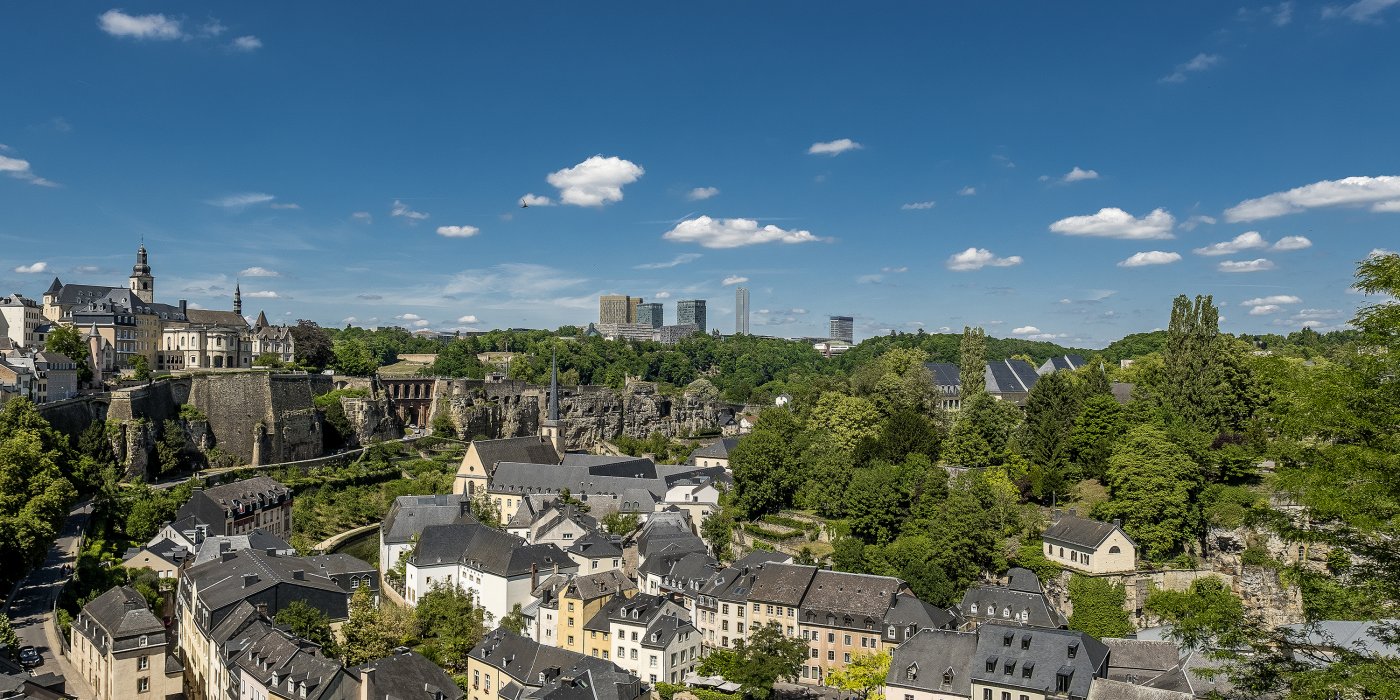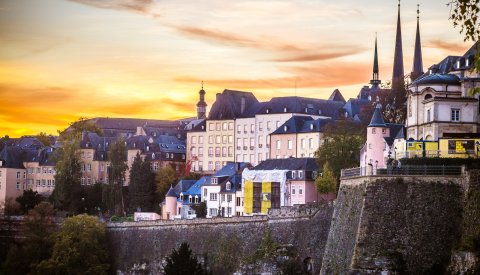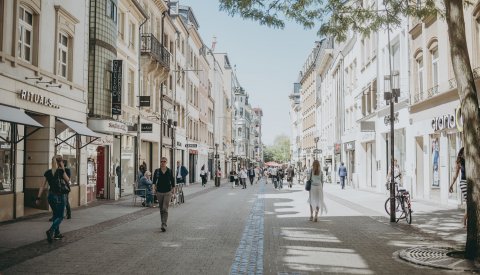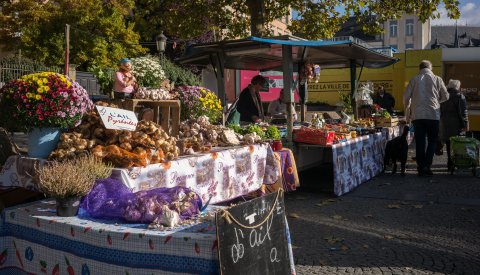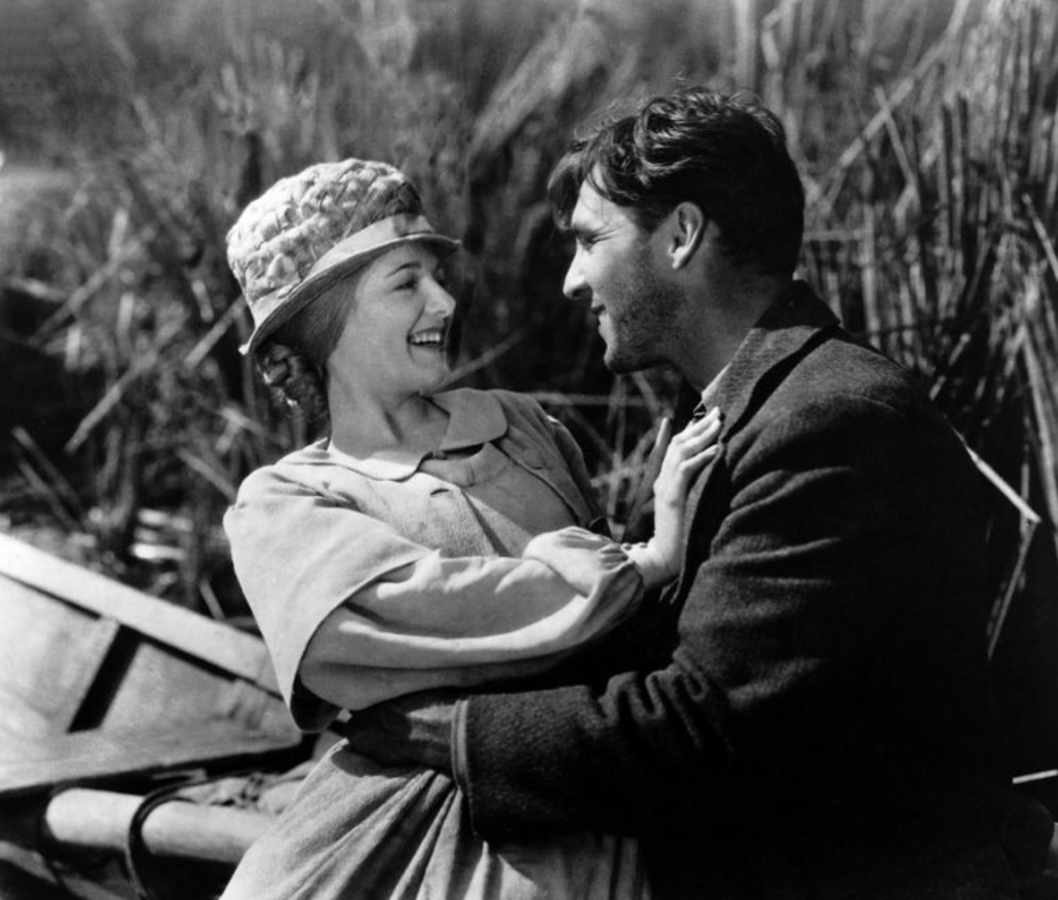Ten good reasons to choose Luxembourg
- European capital – with a human scale
- strategically located in the heart of Europe
- excellent infrastructure
- very safe
- excellent quality of life
- multicultural and multilingual
- open and tolerant, in particular towards other cultures
- fine local products
- world-class cultural offering
- stunning landscapes
Business climate
Stable yet flexible, Luxembourg has a strong business climate:
GDP
Per-capita GDP is more than double the European average, placing Luxembourg among the richest countries in the world.
Link
Labour market
The population of Luxembourg City doubles on work days. This is due to the large number of cross-border workers who come primarily from France, Belgium and Germany.
Competitiveness
Throughout its history, Luxembourg has been able to reinvent itself to maintain – and even increase – its competitiveness as a business hub.
The Grand Duchy
Population
As at 1 January 2019, the country's population was 613,894. Of this figure, 47% hold a foreign passport.
For more information on Luxembourg's labour market, demographics, population density, migration flows, and the degree of urbanisation of its municipalities, go to the Statec website:
Link
Legal holidays
- New Year's Day (1 January)
- Easter Monday
- 1 May
- Europe Day (9 May)
- Ascension Day
- Pentecost Monday
- National Day (23 June)
- Assumption Day (15 August)
- All Saints Day (1 November)
- Christmas (25 December)
- Second day of Christmas (26 December)
For more information, go to the website of the Government of the Grand Duchy.
Festivals and traditions
In addition to its legal holidays, Luxembourg celebrates a large number of festivals and traditions that are deeply rooted in rural life and played a strong role in Luxembourg society right up until the end of the 20th century.
- Dräikinneksdag or Three Kings Day (6 January)
- Liichtmëssdag or Candlemas (2 February)
- Buergbrennen (Bonfire Night)
- Bretzelsonndeg (March or April)
- Eimaischen (March or April)
- Oktav (April and May)
- Schueberfouer (August and September)
- Saint Nicholas (6 December)
Retail Study
This study (conducted H2/2016–H1/2017 by CIMA Beratung + Management GmbH) analyses the current state of the retail sector, affording an insight into how the sector is evolving, as well as providing details on customer behaviour and visitors' general perception of the city.
The study comprises five modules.
Image and consumer behaviour
This part of the study is based on 1,800 telephone interviews and 500 interviews of passers-by (city centre and Gare district) conducted between November 2016 and January 2017. Respondents were grouped into six geographic zones (across the Grand Duchy of Luxembourg, Germany, Belgium and France) located within a maximum of 60 minutes from Luxembourg City. This part of the study analyses the reputation of Luxembourg City; its appeal in terms of cleanliness, safety, atmosphere and leisure activities in particular; the reasons given for visiting the city and the frequency of such visits; overall accessibility and the type of transport used by visitors; as well as the type of products purchased. Respondents were also asked what they felt needed the most improvement in order to enhance the city's general attractiveness.
Retail sector: product range
Based on a survey of the number of shops located in the two main shopping areas (Ville-Haute and the Gare district), combined with their business segment, retail surface area, and turnover, the second part of the study focuses on the range of products offered, as well as any gaps in this offering. Thanks to similar data collected in 2010, this study provides an analysis on how the city's retail sector is evolving.
Quality of products offered
The third part of the study examines the product offering based on price range and quality (luxury products, high-end, mid-range, or low-end products); product presentation and display (outstanding, modern, contemporary, commonplace, or outdated); and geographic location of the shops in the city centre and around Luxembourg Central Station. The situation concerning shops that remain vacant is also addressed in the study, with a distinction made between those in Ville-Haute and those in the Gare district.
Analysis of pedestrian traffic
A survey of pedestrian traffic was conducted from 10–12 November 2016. It covered two weekdays (Thursday and Friday) and one weekend day (Saturday). Data was gathered from 10:00–18:00 at 18 points of entry to the city, including 15 in the city centre and 3 around Luxembourg Central Station. With the information collected, it was possible to analyse pedestrian traffic by day of the week and time of day. A comparison with the 2010 data was only possible to a limited degree, as the surveys were conducted at different times of year.
Online presence of shops
The last part of the study focuses on shops' online presence. Criteria include whether or not shops appear in search engine results; whether or not they have a website and, if so, the quality of the site; whether or not they have an online store; and whether they are present on social media, in particular on Facebook. The results were then analysed in light of the data on consumer purchasing behaviour, in particular by age group and place of residence.
